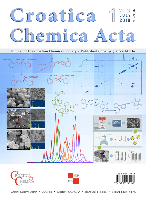
CROATICA CHEMICA ACTA
Scope & Guideline
Innovating Chemistry: Where Ideas Meet Discovery
Introduction
Aims and Scopes
- Catalysis and Reaction Mechanisms:
The journal frequently publishes studies on catalytic processes, exploring new catalysts, reaction pathways, and mechanistic insights that contribute to the understanding of chemical transformations. - Computational Chemistry:
A significant portion of the research involves computational modeling and simulations, providing theoretical frameworks for understanding molecular interactions and predicting chemical behavior. - Biological and Medicinal Chemistry:
Research often focuses on the biological activities of chemical compounds, including drug design and testing, which emphasizes the journal's commitment to integrating chemistry with health sciences. - Sustainable and Green Chemistry:
The journal highlights eco-friendly synthetic methods and the development of sustainable materials, reflecting a growing emphasis on reducing the environmental impact of chemical processes. - Materials Science:
CROATICA CHEMICA ACTA includes studies on the synthesis and characterization of novel materials, particularly nanomaterials and their applications in various fields, showcasing the intersection of chemistry with materials engineering.
Trending and Emerging
- Photocatalysis and Light-Driven Reactions:
There is a growing interest in photocatalytic processes, particularly those utilizing visible light, which aligns with global trends towards sustainable energy solutions and green chemistry. - Nanotechnology and Nanomaterials:
Research on nanomaterials and their applications in drug delivery, catalysis, and materials science is on the rise, showcasing the innovative potential of nanoscale engineering. - Bioinformatics and Computational Drug Design:
The integration of bioinformatics tools in drug discovery and the study of biomolecular interactions is increasingly prominent, reflecting advancements in computational methods and their application in medicinal chemistry. - Interdisciplinary Approaches:
There is an observable trend towards interdisciplinary research that blends chemistry with biology, materials science, and environmental science, highlighting the importance of collaborative approaches in addressing complex scientific challenges. - Green Synthesis Methods:
The emphasis on eco-friendly and sustainable synthesis techniques is becoming more prevalent, as researchers seek to minimize waste and energy consumption in chemical processes.
Declining or Waning
- Traditional Organic Synthesis:
There has been a noticeable decrease in publications centered on classical organic synthesis methodologies, as newer and more efficient approaches gain attention. - Inorganic Chemistry without Biochemical Context:
Research focusing solely on inorganic chemistry aspects, particularly without connections to biological applications, appears to be less frequent, suggesting a trend towards more interdisciplinary studies. - Environmental Chemistry Not Linked to Practical Applications:
While environmental chemistry remains a vital area, studies that do not emphasize practical applications or solutions to current environmental issues are becoming rarer. - Basic Analytical Chemistry:
Basic analytical techniques and methods that do not incorporate innovative or advanced technologies are seeing a decline, possibly due to the increasing complexity and specialization in analytical methodologies. - Historical Perspectives in Chemistry:
There seems to be a waning interest in publishing historical analyses or retrospectives in chemistry, with a shift towards contemporary research that addresses current challenges and innovations.
Similar Journals
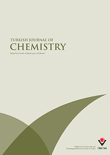
TURKISH JOURNAL OF CHEMISTRY
Catalyzing Innovation Across Diverse Chemical FieldsTURKISH JOURNAL OF CHEMISTRY, published by the Tubitak Scientific & Technological Research Council Turkey, serves as a significant platform for the dissemination of research in the diverse field of chemistry. Since its inception in 1996, this peer-reviewed journal has made substantial contributions to the body of knowledge within the field, currently holding a respectable Q3 ranking in the category of Chemistry (miscellaneous) as of 2023. Researchers and professionals alike rely on this journal for its wide-ranging discussions, innovative methodologies, and noteworthy findings pertinent to both fundamental and applied chemistry. With an ISSN of 1300-0527 and a commitment to promoting scientific progress, the journal is accessible to a global audience and encourages the open sharing of insights that drive advancements in chemistry. The extended timeframe of convergence until 2024 highlights the journal's dedication to fostering ongoing research and collaboration within the scientific community. As a valuable resource for researchers, professionals, and students, the Turkish Journal of Chemistry aims to inspire new discoveries and facilitate knowledge transfer in a dynamic and evolving discipline.

ACS Organic & Inorganic Au
Connecting Researchers for a Sustainable Future in ChemistryACS Organic & Inorganic Au, published by the American Chemical Society, stands as a premier open-access journal dedicated to advancing the fields of organic and inorganic chemistry. Since its inception in 2021, this journal has swiftly risen to prominence, achieving a commendable Q1 classification in Inorganic Chemistry, Organic Chemistry, and Physical and Theoretical Chemistry as of 2023. With an ISSN of 2694-247X, it provides a vital platform for researchers, professionals, and students to disseminate their findings and engage with cutting-edge work across converged disciplines. Operating from its headquarters in Washington, DC, ACS Organic & Inorganic Au is committed to fostering a collaborative research environment, encouraging rigorous peer review, and ensuring the wide accessibility of high-quality scholarly articles. With its open-access model, readers worldwide can freely access and utilize research findings, promoting a global exchange of knowledge crucial for driving innovation in chemistry.
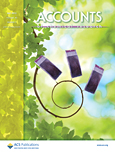
ACCOUNTS OF CHEMICAL RESEARCH
Bridging Disciplines: Where Chemistry Meets MedicineACCOUNTS OF CHEMICAL RESEARCH, published by the American Chemical Society, is a premier journal dedicated to advancing the field of chemistry and its applications in medicine. With an impressive impact factor and recognition as a Q1 journal in both chemistry and medicine categories, it ranks among the top-tier publications, exhibiting an outstanding Scopus rank of 8 out of 408 in general chemistry, placing it in the 98th percentile. This journal has been a vital source of innovative and significant research since its inception in 1968, and it aims to provide a platform for high-quality research articles, reviews, and critical essays that bridge the gap between chemical research and clinical implications. While it is not an open-access publication, the insights available in Accounts of Chemical Research are invaluable for researchers, professionals, and students seeking to explore the latest developments and interdisciplinary approaches within the dynamic fields of chemistry and medicine.
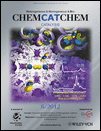
ChemCatChem
Advancing Catalysis and Chemistry for a Brighter Tomorrow.ChemCatChem is a leading international journal published by WILEY-V C H VERLAG GMBH that has been making significant contributions to the fields of catalysis, inorganic and organic chemistry, as well as physical and theoretical chemistry since its inception in 2009. With an established reputation for excellence, this journal holds commendable rankings in various categories, including Q1 in Inorganic Chemistry and Q1 in Organic Chemistry, demonstrating its pivotal role in advancing scientific knowledge and innovation. Notably, it has achieved a high Scopus ranking, securing 10th place out of 79 in Inorganic Chemistry, among others, showcasing its influence and quality. Although open access options are not available, the journal offers cutting-edge research articles, reviews, and insights that are vital for researchers, professionals, and students aiming to stay at the forefront of chemical science. With its address rooted in Weinheim, Germany, and convergence projected to continue until 2024, ChemCatChem remains a dynamic platform for disseminating vital advancements within the chemical community.

JOURNAL OF CHEMICAL RESEARCH
Elevating Chemistry: A Platform for Groundbreaking Studies.JOURNAL OF CHEMICAL RESEARCH, published by SAGE PUBLICATIONS LTD, serves as a pivotal platform for scholars and practitioners in the field of Chemistry. With its ISSN 1747-5198 and E-ISSN 2047-6507, this journal has established itself as a reliable source of innovative research since its inception in 2000. The journal's comprehensive scope encompasses various facets of chemical research, providing a broad spectrum of articles that foster scientific advancement and technological innovation. Ranked in the Q3 tier of miscellaneous chemistry journals in 2023, with a Scopus rank of #246 out of 408, it represents a solid outlet for emerging and established researchers alike. Although currently not an open-access journal, its rigorous peer-review process ensures that only high-quality studies are published, catering to the academic and professional community's demand for credible and impactful findings. Positioned in the vibrant research landscape of the United Kingdom, the JOURNAL OF CHEMICAL RESEARCH is dedicated to expanding the frontiers of chemical sciences and is an essential resource for anyone committed to advancing this dynamic field.
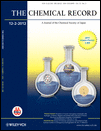
CHEMICAL RECORD
Elevating Research Standards in Chemistry and BeyondThe Chemical Record is a prestigious peer-reviewed journal published by WILEY-V C H VERLAG GMBH, focusing on innovative research and developments across the diverse and evolving fields of chemistry and biochemistry. With an esteemed 2023 Impact Factor and recognized as a Q1 journal in several categories—including Biochemistry, Chemical Engineering, and Materials Chemistry—The Chemical Record stands as a critical resource for researchers, professionals, and students aiming to disseminate and acquire knowledge in these disciplines. The journal's engaging scope covers contemporary topics and fosters collaboration within the global scientific community, ensuring accessibility to cutting-edge research. By publishing articles that meet the highest standards of scholarship, it has earned a significant place within the academic ecosystem, as reflected in its strong Scopus rankings. Although The Chemical Record operates without open access, it remains deeply committed to advancing the field of chemistry through rigorous and impactful publications that bridge gaps between theory and practice.
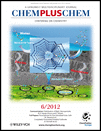
ChemPlusChem
Advancing Chemistry Through Collaboration and InnovationChemPlusChem is a premier journal published by WILEY-V C H VERLAG GMBH, dedicated to the vibrant field of chemistry. With an ISSN of 2192-6506 and an impressive Q1 ranking in Scopus's 2023 category for miscellaneous chemistry, this journal serves as a significant platform for the dissemination of high-quality research and innovative findings. Since its inception in 2012, ChemPlusChem has fostered interdisciplinary collaborations, encapsulating a wide array of topics within chemistry that facilitate scientific advancement and education. The journal features a robust open access system, enabling extensive visibility for authors while providing easy-to-access resources for researchers, professionals, and students globally. Located in Weinheim, Germany, ChemPlusChem reflects international standards and ambitions, striving to enrich the global scientific community through rigorous research and engaging scientific discourse.
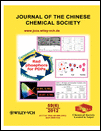
JOURNAL OF THE CHINESE CHEMICAL SOCIETY
Bridging Theory and Practice in Chemical SciencesJOURNAL OF THE CHINESE CHEMICAL SOCIETY, published by WILEY-V C H VERLAG GMBH, is a vital resource in the field of chemistry, focusing on a broad array of topics pertinent to general chemistry and its advancing sub-disciplines. Established in 1954 and running through 2024, this journal serves as a significant platform for the dissemination of high-quality research, showcasing innovative findings and developments within the chemical sciences. With its Q3 category ranking and positioning at Rank #203 in General Chemistry per Scopus, it reflects the journal's commitment to research excellence and impact. While not an open-access publication, it ensures accessibility to a global audience, making it an essential tool for researchers, professionals, and students alike seeking to stay informed and engaged in the evolving landscape of chemistry.

RSC Advances
Connecting Researchers to Transformative IdeasRSC Advances, published by the Royal Society of Chemistry, is a leading open-access journal that has been a prominent platform for cutting-edge research since its inception in 2011. Recognized globally for its rigorous peer-review process, RSC Advances serves the dynamic fields of Chemical Engineering and Chemistry, holding prestigious rankings within the top quartile of academic journals in both areas. With its impact factor reflecting a growing influence, the journal currently occupies the Q1 category in Chemical Engineering and Q2 in Chemistry as of 2023. Researchers and professionals will find RSC Advances an essential resource for innovative studies and applications that advance scientific knowledge. Additionally, as an open access journal since 2017, it affords wider visibility and accessibility to groundbreaking research, fostering collaboration and engagement in the scientific community. Situated in Cambridge, UK, RSC Advances remains committed to its objective of disseminating high-quality research that catalyzes progress across various disciplines.

JOURNAL OF THE CHEMICAL SOCIETY OF PAKISTAN
Connecting Local Insights with Global Impact.JOURNAL OF THE CHEMICAL SOCIETY OF PAKISTAN is a premier academic journal published by the Chemical Society of Pakistan, focusing on advancing the field of chemistry through rigorous research and scholarship. Established in 1996, this journal aims to disseminate high-quality research articles, reviews, and insights pertaining to various subfields of chemistry, making substantial contributions to both local and international scientific communities. With a current impact factor placing it in the Q4 category, the journal continues to foster discussions on emerging trends and innovations within the discipline. Additionally, it holds a Scopus rank of #305 out of 408, highlighting its growing influence despite being positioned in the 25th percentile. Although it is not an open-access journal, it provides a crucial platform for researchers and professionals in Pakistan and worldwide. The JOURNAL OF THE CHEMICAL SOCIETY OF PAKISTAN serves as a valuable resource for students, educators, and industry professionals alike, facilitating the exchange of knowledge and promoting advancements in chemical sciences.